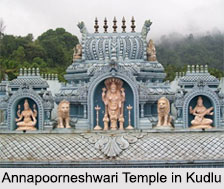 The town of Kudlu has a rich historical and cultural heritage and is among the 6 towns of Kasaragod Block of the Kasaragod district. Kudlu has many religious spots and hosts as many as three major temples along with numerous inner sanctums. Kudlu is also the name of a village near the southern border of the Indian city of Bangalore.
The town of Kudlu has a rich historical and cultural heritage and is among the 6 towns of Kasaragod Block of the Kasaragod district. Kudlu has many religious spots and hosts as many as three major temples along with numerous inner sanctums. Kudlu is also the name of a village near the southern border of the Indian city of Bangalore.
Demographics of Kudlu
As per the reports of Census India 2011, the total population of Kudlu is 26,235. Out of which the number of males are 12,682 which is lower than that of the females that is 13,553. The number of children between the ages of 0 to 6 years is 3,148, out of which 1,609 are boys and 1,539 are girls. The literacy rate in the town is about 82% which is higher than the state average; the male literacy rate is 84% while the female is 81%. The official language spoken here is Malayalam and Tulu.
Nearby attractions of Kudlu
The town of Kudlu has a number of religious places. Listed below is a list of few famous temples in Kudlu.
Kuthyala Shree Gopalakrishna Temple: Built almost 200 years ago by Shri, the Kuthyala Shree Gopalakrishna Temple houses the idol of Santana Gopalakrishna. Legend says that couples who do not have any off-springs get blessed after offering prayers and penance to Santana Gopalakrishna.
Annapoorneshwari Temple: Situated on the banks of the Bhadra River, the temple is also known as the Sri Adhishakthyathmaka Annapoorneshwari or Sri Kshetra Horanadu Temple. It is believed that in the 8th century, Maharshi Agasthya established goddess Adishakthyathmaka Sri Annapoorneshwari here. According to Hindu legends, it is said that in an argument between Lord Shiva and Goddess Parvati, Lord Shiva declared everything in the world including food to be Maya or illusion. To prove him wrong, Goddess Parvati disappeared in the nature to become still. Neither climates changed nor plants grew, causing draught in the world. Taking pity the Goddess appeared and distributed food to all, and since then she is known as Devi Annapoorna. Anna means grains or food and Poorna means perfect and complete. Hence, Annapoorna means complete or perfect food. Akshaya Thadige or Akshya Tritya is the main festival celebrated in this temple. This day is believed to be the birth date of Devi Annapoorna.
The two other temples along-with these are the Mahavishnu Temple and the Vishnumangila and Sadashiva Temple. The temples are managed by the oldest and prominent families of Kudlu called the Kudlu Shanbhogue family. Other than these, the other important places of worship around the area is the Devaragudda, which is the sacred hill belonging to the almighty and the Shri Kuttichathan Kshethram Temple.
Visiting Information on Kudlu
The Kasaragod railway station is the closest at a distance of almost 400 km from Kudlu. While, the Mangaluru International Airport is at a fair distance of about 385 km from the town of Kudlu.



















